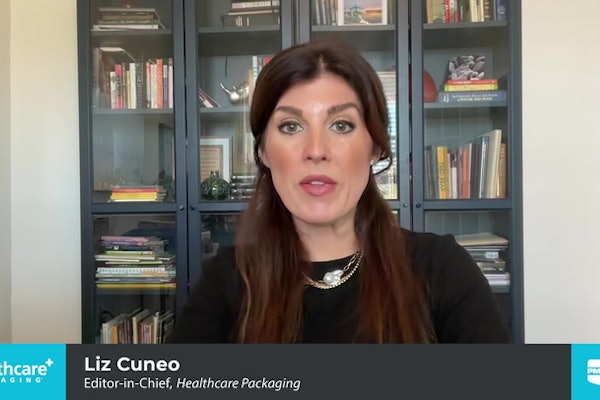Inspection systems help ensure the safety and accuracy of pharmaceutical products on sterile packaging lines. Systems can verify cap placement, foil presence, and label positioning, etc., to confirm the accuracy of lot numbers, expiration dates, and sense adequate product presence. Most downtime generated by these systems is due to improper set up during product changeovers. To ensure proper adjustment, make sure inspection systems provide the following:
• positive engagement with feedback, such as slides with position display, and servo motors with operator interfaces
• a mechanical system that maintains proper positioning and provides information about the particular location of the inspecting device
Buffer systems help keep equipment running during brief line stoppages and ensure a constant product flow during speed changes. Buffer systems can be integrated into the line and use minimal floor space, boosting productivity where scheduled stoppages such as a labeler roll change or tape change are frequent.
• When new machinery is purchased, equipment makers can provide theoretical or historical machine information as a reference point to estimate downtime duration and frequency. Scheduled and unscheduled downtime should be identified, and an appropriate buffer should be considered to help maintain line production during stoppages.
• Use speed control to maintain optimal backup/buffer previous to the equipment. Speed control helps keep the line balanced in order to increase overall line efficiency.
--By Ignacio Munoz-Guerra, general director, AutoPak Engineering Corp.
Ignacio Munoz-Guerra has 25 years of experience in developing innovative solutions for pharmaceutical and consumer goods packaging lines. He earned a B.S. in mechanical engineering from Princeton University.
• positive engagement with feedback, such as slides with position display, and servo motors with operator interfaces
• a mechanical system that maintains proper positioning and provides information about the particular location of the inspecting device
Buffer systems help keep equipment running during brief line stoppages and ensure a constant product flow during speed changes. Buffer systems can be integrated into the line and use minimal floor space, boosting productivity where scheduled stoppages such as a labeler roll change or tape change are frequent.
• When new machinery is purchased, equipment makers can provide theoretical or historical machine information as a reference point to estimate downtime duration and frequency. Scheduled and unscheduled downtime should be identified, and an appropriate buffer should be considered to help maintain line production during stoppages.
• Use speed control to maintain optimal backup/buffer previous to the equipment. Speed control helps keep the line balanced in order to increase overall line efficiency.
--By Ignacio Munoz-Guerra, general director, AutoPak Engineering Corp.
Ignacio Munoz-Guerra has 25 years of experience in developing innovative solutions for pharmaceutical and consumer goods packaging lines. He earned a B.S. in mechanical engineering from Princeton University.


















